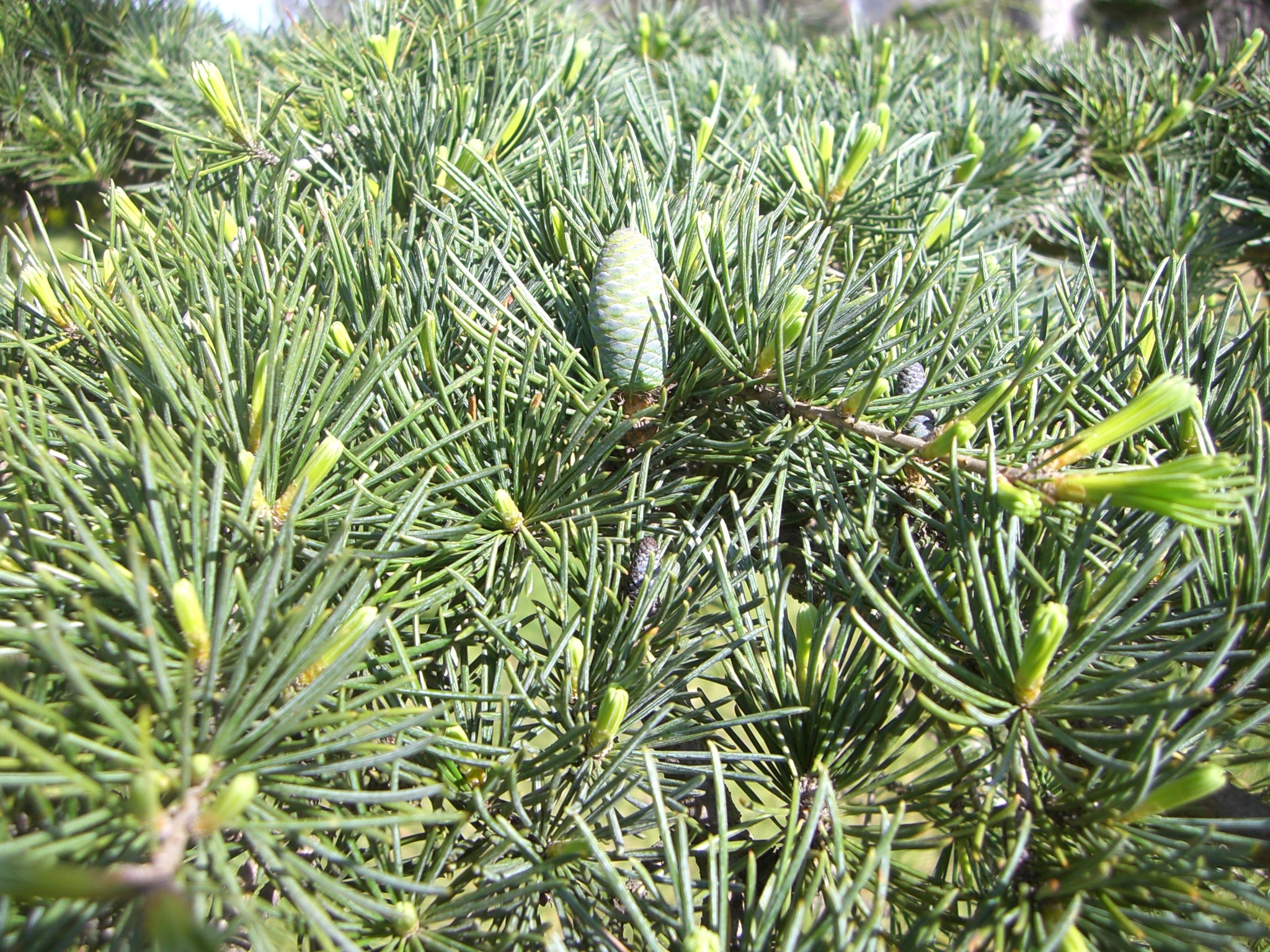
A tree growing to about 40 m tall with a distinctive nodding leading shoot and side branches that are slightly pendulous at the tips. Young shoots pale brown, scurfy at first. Leaves 3-5 cm long. Male and female cones on diffferent or same trees. In Victoria most trees are male, some entirely female and a few with both sexes on the same tree. Male cones erect, cylindrical mostly 5-7cm long, shed early May. Female cones barrel-shaped, 8-12 cm long, 5-6 cm wide, splitting up early May.
Grows naturally in Himalaya mostly at alt. c. 1700-3000 m. This is one of the most widely planted ornamental conifers in spite of its large eventual size: it forms a feature of many private and public gardens.
W Himalaya.
Nodding leader and drooping branch tips; long leaves.
SA: Mt Gambier ('Barn Palais', Nelson Road; Bot. Gds; Vansittart Park); Penola ('Yallum Park'); Stirling ('St Vigeans', 17 Laurel Rd). NSW: Bathurst (Base Hospital; Machattie Park); Bowral (Corbett Gds); Leura ('Everglades'); Mt Tomah (Bot. Gds, Brunet Meadow); Orange (Cook Park 120 years old; Robertson Park); Sydney (Royal Bot. Gds); Wagga Wagga (Victory Memorial Gds); Wellington (Park). ACT: ANU (entrance to Old Canberra House); Duntroon (Officers Mess Lawn, ptd c. 1880); Government House (Yarralumla, possibly ptd c. 1850, over 100 years old). VIC: Burnley (V.C.A.H., 11 m tall in 1989, ptd. 1857); Kew (Methodists Ladies College; Willsmere Hospital); Ballarat (Bot. Gds); Emerald (many specimens by lake); Maroondah (dam, several); Mt Macedon ('Alton'); Maldon (in front of museum); Parkville (Melbourne University Botany Dept Systems Garden); Silvan (dam). TAS: Deloraine (Meander River Reserve); Hagley (St Mary's Church); Hobart (Royal Tasmanian Bot. Gds; Stowell Ave, Battery Point c. 35 m in 1989 when c. 110 years old); Launceston (Cataract Gorge; City Park; Kings Park); New Norfolk (riverside); Westbury (common).
SA: Adelaide (Adelaide Botanic Garden c. 20 m 1993). VIC: Dandenongs ('Pirianda'); Melbourne (Royal Bot. Gds, Princes Lawn below perennial border); Mt Macedon ('Cameron Lodge'); Prahran (Freemason's Homes, Punt Rd, 2 large trees); South Melbourne (St Vincents Gds).
Gold Nugget' Miniature selection with bright gold foliage having green undertones. A witch's broom found by Ian Powell in South Australia and propagated by Peter Nitschke.
Source: (1995). Pinaceae. In: . Horticultural Flora of South-eastern Australia. Volume 1, Ferns, conifers & their allies. The identification of garden and cultivated plants. University of New South Wales Press.

Golden Deodar. Golden-leaved cultivar that greens in the autumn and rarely attains the dimensions of non-variegated trees. Origin UK nineteenth century.
Slow-growing, upright, round with creamy-white foliage. Raised from seed and introduced by Floravista Gds, Victoria, BC, Canada.
Pyramidal, new foliage white, gradually changing to blue-green. Raised from seed and introduced by Floravista Gds, Victoria, BC, Canada.
Foliage bluish. Origin Germany although possibly best regarded as a group name.
Also known as 'Vink's Gold Prostrate' is prostrate with the occasional upright shoot; foliage golden. Discovered as a seedling by Peter Vink c. 1975.
Cedrus deodara 'Golden Horizon'
Spreading, flat-topped, with golden yellow foliage. Selected as seedling by G. van Vliet, Boskoop, Netherlands.
Irregular, broader than tall, compact. Foliage lime green, sometimes twisted. Grows about 1 m in 10 years. Discovered in garden at Sassafras, Dandenong Ranges, Victoria in 1970s and soon introduced into nurseries.
Cedrus deodara 'Mountain Beauty'
Irregular, compact, with a slight yellow tinge to the foliage, growing about 1.5 m in 10 years. Found in 1980s by Gordon Wilton as a witch's broom in the Blue Mountains west of Sydney and introduced by Milton's Nsy, Wentworth Falls, New South Wales.
('Warrakilla') Mushroom shaped, growing about 1 m in 10 years. A pale version of 'Lime Glow'. Witches broom from Mylor, South Australia, collected and introduced c. 1978.
Branches weeping, new growth thick; often available as a staked standard but also grown without staking, may spread to become a low, rounded bush. Probably requires a new name. Origin uncertain.
Ground-hugging and widespreading, similar to 'Pendula' and doubtfully distinct. Origin uncertain.
Weeping bush with thin branches; grows about half a metre in 10 years. Found as a witch's broom in Upper Sturt, South Australia by Peter Traverna in 1978.
Semi-dwarf, forming a mound of white foliage. Raised from seed and introduced by Floravista Gds, Victoria, BC, Canada.
Small bush of white foliage greening in the centre. Raised from seed and introduced by Floravista Gds, Victoria, BC, Canada.
S Gold' Habit dense with layered branches; foliage gold with grey undertones. Selected as a seedling by Peter Vink, nurseryman of Ferny Creek, Victoria, Australia c. 1975.
Cedrus deodara 'Waverley Ridge'
Mushroom shape when young but tending to develop into an inverted cone, growing c. 1.5 m in 10 years. Foliage compact; leaves with a yellowish tinge, burning in open sun. Witch's broom found in 1978 by Peter Traverna at Crafers, South Australia and introduced by p. C. Nitschke, Hahndorf, South Australia.